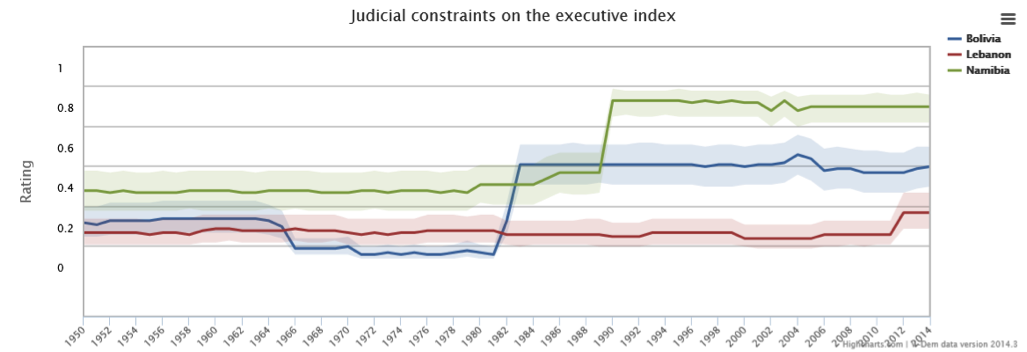Judicial constraints on the executive index
By: V-Dem Staff
Oct 08, 2015
The judicial constraints on the executive index, provided by V-Dem, measures to what extent the executive respects the constitution and complies with court rulings, and to what extent the judiciary is able to act in an independent fashion.
When graphing the index for three countries from different regions, differences in development over time and current levels are evident. In the 1950s Bolivia and Lebanon were on approximately the same level of just above .2, suggesting that the constraints on the executive was very limited at this point in time. This continues to be the case for Lebanon even in recent years, as only a minor improvement takes place in connection to the Arab Spring in 2011. In Bolivia, on the other hand, the power of the judiciary substantially expands in 1982 and 1983, reflecting the country’s transition to democracy following a long period characterized by coups and military rule.
Namibia’s score has been slightly higher historically, which has persisted until the present day. A significant improvement occurred when the country gained independence in 1990.
As of 2014 Namibia scores above .8 on the index, whereas Bolivia scores .6 and Lebanon just below .2. Hence, additional efforts would be desirable in Lebanon and Bolivia, if they are to achieve an independent judiciary with the ability to constrain the executive and thus strengthen the rule of law.


